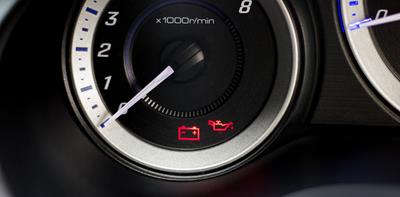
EASY AS HACK
“If you have a flat tyre, stop as soon as it is safe to do so. Only change the tyre if you can do so without putting yourself or others at risk.” The Highway Code.
At a glance
|
How TO CHANGE A CAR TYRE?
Have you experienced that sinking feeling when a puncture strikes? It sets back your day, especially if you don’t know how to change a tyre and need to wait for a breakdown service.
Follow our guide to changing the wheel and what to do to keep safe. With the right equipment and our step-by-step how-to-guide, you’ll soon be on your way.
Equipment you’ll need to change a car tyre
You’ll need the following equipment to change a car tyre:
- An inflated spare wheel – to replace the punctured tyre
- A jack – for lifting the car off the ground
- The owner’s manual – showing you where to put the jack
- Wrenches – a wheel brace or wrench to fit the wheel nuts or bolts and a torque wrench to tighten the nuts
- Wheel chocks/wedges – for keeping the jack stable
- Locking wheel nut key – to unlock locking nuts or bolts if you have them
- Alignment tool – to fit the wheel (on cars with wheel bolts)
- Gloves – to save your hands from potential cuts[1]
- Torch – for seeing clearly if the flat tyre happens at night
- Reflective jacket – helping other drivers to see you
- Warning triangle – alerting road users to the hazard
- Tyre pressure gauge – to check the tyre is wholly inflated.[2]
How to change your tyre
Wearing your high-vis vest, put your red warning triangle behind your car. The Highway Code recommends at least 45 metres away.
Remove the jack, wrench(es) and spare tyre from the boot or under the back seat or door [3], then follow these steps to replace a tyre safely:
1. Prepare the car
It’s dangerous to change a tyre on a slope. So, if you have a flat tyre, first ensure your vehicle is on a level surface like a car park with enough room to work safely.[1]
- Turn off the engine
- Set the handbrake
- Place the car in first gear (manual) or park (automatic).
Next, turn on the car’s hazard warning lights and ask your passengers to leave the vehicle.
Then, use chocks or heavy objects like bricks on either side of the wheel diagonally opposite the tyre you’re changing. Doing this will stop the car from rolling.[2]
2. Loosen the wheel nuts
It’s safest to loosen the wheel nuts before you lift the vehicle. You don’t want the car to move while it’s off the ground.
- Unlock any locked wheel nuts or bolts with the locking key
- Take the wheel brace or wrench and loosen the nuts by pushing down anticlockwise
- Loosen the nuts slightly with your hands, not your feet, then stop.[1]
3. Lift up the vehicle with the jack
You can now lift the car up at the jacking point. A piece of wood under it will stabilise it.[2] Check your manual for each point’s location. Alternatively, you may see the points marked as arrows or lifting pads under the car's sides.[3]
- Remove the jack from the boot – it’s most likely to be a scissor jack the manufacturer supplied[3]
- Position it under the vehicle closest to the wheel with the punctured tyre [2]
- Slot in and wind the jack’s handle slowly to raise the car until the tyre is about 10cm off the ground [2]
- If the jack isn’t straight, lower it and start again.[1]
Ensure no part of your body is underneath the vehicle, as jacks can fall if not positioned correctly. That’s why axle stands are safest when getting under the car (which you should not be doing). [3]
4. Remove the punctured wheel
Remove the wheel nuts by hand and set them aside to pull off the punctured wheel. Make a note of which way around they were. [1]
The wheel should slide out of position. Once removed, place it flat on the ground out of your way.
5. Fit the spare wheel
You must fit the wheel the correct way around. And remember, it will be heavy to lift.
If your spare wheel has wheel bolts, ensure you align the bolts with the holes in the hub. Use your alignment tool if you have one.
It’s easier if you have nuts and studs – just slide the wheel onto the studs protruding from the hub and thread on the nut.[1]
6. Tighten your wheel nuts
Use your hands to tighten the wheel nuts in the following sequence – tighten one, then the one diagonally opposite, not the one directly next to it.
7. Lower the vehicle
Turn the jack handle anticlockwise to lower the car until the wheel and tyre you replaced have touched the floor. [2] The total weight of the vehicle should not be on the ground.[4]
Fully tighten the wheel nuts or bolts using a wheel brace or wrench. Finish lowering your vehicle and remove the jack once the car is secure.[1]
Return the jack and the old tyre to the boot with the wrench or brace.[2]
8. Check the tyre pressure
If you have a tyre pressure gauge, check that you have fully inflated the just-fitted wheel.
Or you can drive to a petrol station to use its gauge and pump the tyre up to the correct pressure.[2]
Having used your tyre in an emergency, visit your garage or dealer immediately. Ask them whether it’s worth repairing or replacing the tyre.
Reasons you might need to change your tyre
You may need to change your tyre for the following reasons:
- A worn tread (the legal limit is 1.6mm)
- It’s damaged – for example, it has cracked sidewall
- The tyre has worn unevenly and is distorted
- The tyre carcass is deformed
- You’re switching to summer or winter tyres [5]
- The tyre is old (lifespan differs according to environmental exposure) [6]
The AA recommends checking your tyres professionally every 5 years when they’ll most likely need replacing.[6]
How long does it take to change a tyre?
You need practice and guidance to change a tyre, a mechanic would usually take on average 15-30 minutes. So, if you’re changing a tyre for the first time, it could take more than this.[1]
The time it takes will depend on whether you have prepared for a tyre change by ensuring all you need is in the car.
Read: How to look after your car when you’re not using it.
What should you not do when changing a flat tyre?
Changing a flat tyre is complicated and it’s essential to be safe when attempting it:
- Don’t change your tyre beside a busy or narrow road [2]
- Don’t change it on uneven or unfirm ground [3]
- Don’t crawl beneath the vehicle
- Don’t change a tyre while passengers remain in the car [2]
- Never leave the car in neutral or with its handbrake off
Avoiding a flat tyre
You could lessen the chance of a flat tyre by taking the following steps:
- Maintain your tyres (including the spare) in a safe and legal condition
- Keep the correct kit in your car to change a tyre
- Plan – take everything you need and learn how to use each tool
Ageas car insurance: See how we can protect you and your car.
FAQs
Is it difficult to change a tyre?
People need some guidance to change a tyre. If you have never done it before, it can be challenging. You must not rush.
Can you drive on a flat tyre?
It’s best not to drive on a flat tyre. When you realise you have a flat tyre, you should pull over and stop in a safe place.
Driving on a flat tyre can endanger yourself, your passengers and other drivers because you could lose control of the car. It could also ruin the wheel.
Can you change a tyre on the motorway?
Authorities advise against changing a tyre beside a motorway or on the hard shoulder. Instead, call a breakdown company for assistance.
Can you claim on car insurance for a punctured tyre?
No. Usually car insurers will not cover a claim for just a punctured tyre. However, if the tyre(s) have been damaged or punctured with other parts of the vehicle, due to impact damage or an accident, this would normally be covered.
Can you leave a spare tyre on your car?
- Unless they are a full like for like replacement. No. Most spare tires are temporary and meant solely for emergencies.
- Some tyres in the boot are ‘skinny’ temporary types that are smaller, which could impact how your vehicle behaves while driving.
Read: Learn more about what tyres you need.
How often should you change your tyre?
The AA recommends changing your tyres every 5 years. [6]
How long does it take to change a tyre?
Changing a tyre takes around 30 minutes, depending on your experience and the weather.
Sources
[1] https://www.theaa.com/breakdown-cover/advice/change-a-flat-tyre
[2] https://www.rac.co.uk/drive/advice/car-maintenance/how-to-change-a-tyre/
[3] https://haynes.com/en-gb/tips-tutorials/how-jack-car-and-fit-spare-wheel
[4] https://www.michelin.co.uk/auto/advice/change-tyres/spare-tyre#:~:text=Take%20your%20spare%20tyre%20and,checking%20they're%20all%20secure.
[5] https://www.rospa.com/media/documents/road-safety/Tyre-Safety-Factsheet-July-2023.pdf
[6] https://www.theaa.com/driving-advice/safety/tyre-life-and-age#replace


